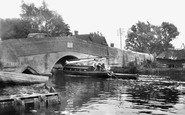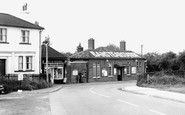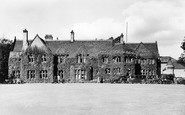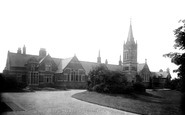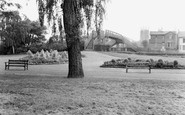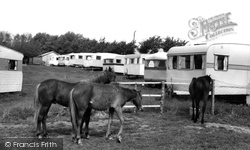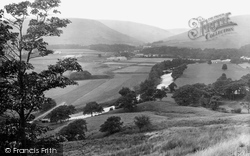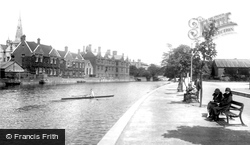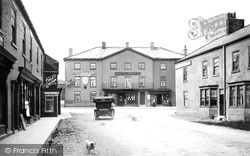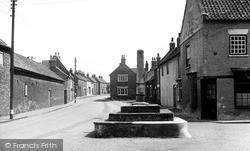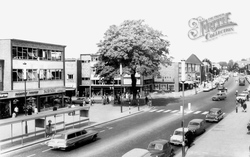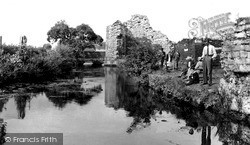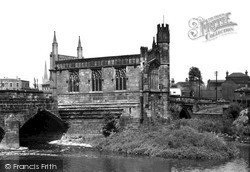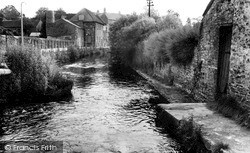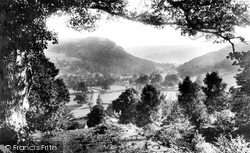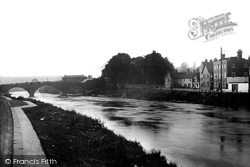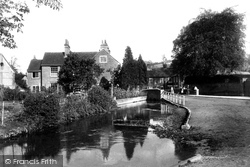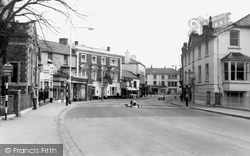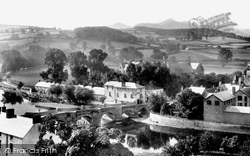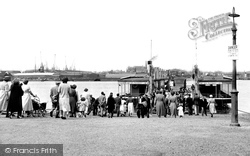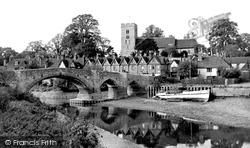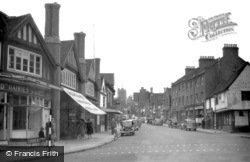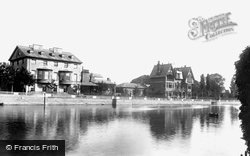Places
17 places found.
Those places high-lighted have photos. All locations may have maps, books and memories.
- Bridge End, Oxfordshire
- Bridge End, Lincolnshire
- Bridge End, Essex
- Bridge End, Bedfordshire
- Bridge End, Clwyd
- Bridge End, Warwickshire
- Bridge End, Surrey
- Bridge End, Durham (near Frosterley)
- Bridge End, Northumberland (near Hexham)
- Bridge End, Hereford & Worcester (near Tirley)
- Bridge End, Hereford & Worcester (near Bosbury)
- Bridge End, Shetland Islands
- Bridge End, Cumbria (near Carlisle)
- Bridge End, Northumberland (near Hexham)
- Bridge End, Devon (near Kingsbridge)
- Bridge End, Devon (near Sidmouth)
- West End, Yorkshire (near Pateley Bridge)
Photos
40 photos found. Showing results 1,281 to 40.
Maps
520 maps found.
Books
2 books found. Showing results 1,537 to 2.
Memories
1,925 memories found. Showing results 641 to 650.
The Water Otter
Just by the road bridge on the Yarmouth side was a pub with a long grass garden which went down to the river, on the bank was a post with a notice on it which read "Don't disturb the water otter" and tied to the post was a rusty ...Read more
A memory of Potter Heigham in 1953 by
Banstead Station
I well remember Banstead station in the 1950's. I used it to go to school in Wallington from 1953 to 1959 and then to go to College and then to work in London. At this time I lived in Nork and of course in those days the trains ...Read more
A memory of Banstead in 1953 by
Lower Lodge
I was born in Hereford and for the first couple of months of my life lived with my grandparents in Lower Lodge, Lugwardine before moving to Seven Kings, Ilford, Essex. From about 1953-60, each year I spent much of the school holidays ...Read more
A memory of Lugwardine in 1953 by
Long Lost Contact
In 1952 I was serving in the Royal Air Force at R.A.F. Ouston, not far from Wylam. One evening there was a dance in the NAAFI and a number of young ladies came from the Castle Hill Convalescent Home by coach. I met and danced with a ...Read more
A memory of Wylam in 1952 by
My Schooldays 1952 54 Near Skipton
My Grandparents lived at 26 Otley Street in Skipton from the 1940 ( or earlier ) and I had first visited them in 1945 after VE day, They were Thomas Henry Jackson, my Grandmother Charlotte Jackson and their batchelor ...Read more
A memory of Skipton in 1952 by
Town Hall Roundabout
Living in Watford from the early 1950's, I well remember the Town Hall roundabout before they moved it. Can't recollect whether it was nearer or further away. I can recollect, not far from a pub called the OBH, or almost opposite ...Read more
A memory of Watford in 1952 by
Happy Memories Of The Harris Orphanage
I have happy memories of the Harris orphanage. My two brothers and I spent 18 months there. We livd in no 7 and our foster parents were Mr and Mrs Perkins, who was a first rate cook. The govenor was a retired ...Read more
A memory of Preston in 1952 by
School Days
I lived in Ridgeway, Langwith Junction. Mum would give me a shilling to go to the pictures matinee at the Empire on Saturday morning. It cost 7 pence to go in and 5 pence for sweets, it would be packed with kids, you coudn't hear ...Read more
A memory of Langwith Lodge in 1952 by
Crossing The Railway Footbridge To Go To Art Lessons
I attended John Ruskin Grammar school in the 1950's when it was in Tamworth Road. Our 'Art lessons' were held in a church hall across from Wandle Park and we had to walk across the railway ...Read more
A memory of Croydon in 1952 by
Old School Days
I remember in what must be 1952 I attended Chapter school for girls in Cliffe Road Frindsbury. Does anyone remember Joy Poynter, I believe she lived fairly close to the school. I think it must have been demolished because it seems to ...Read more
A memory of Strood in 1952 by
Captions
1,770 captions found. Showing results 1,537 to 1,560.
This was among the 'horror pictures' used by the land agent John Cripwell in order to encourage Lord Antrim and the council of the National Trust to buy two thousand of acres from Lyme Regis to
Our photographer is standing on the bridge over the lock which separates the dock from the Lancaster Canal basin.
This fine seven-arch Grecian-style bridge over the River Don was built in 1850; it linked the village to Warmsworth, and replaced the ferry service.
Hidden among the trees in the centre of our photograph is a foot (and animal) bridge just a few miles outside Dunsop Bridge.The hill on the left is called Knot or Sugar Loaf.
We have now moved upstream west of the bridge, with a view taken from St Mary's Embankment in St Mary's Gardens.
Boroughbridge dates back to Norman times, when a bridge was constructed over the River Ure. In 1322 the Earl of Lancaster sought refuge in the local church following his defeat by Edward II.
A bridge over the River Hull made this village an important crossroads in medieval times - pleasure boats still tie up here.
Well known chain stores were strongly represented in Marlowes and Bridge Street - Truform Shoes, Dorothy Perkins, Milletts and Burton the tailors were here - as well as local shops and retail outlets such
An unusual view of the Abbey Gateway—in the centre—and the bridge over the Cornmill Stream, a tributary of the River Lea, with people relaxing around the broken walls.
This view is taken from the railway bridge on Brunel's Great Western Railway line from Paddington to Bristol, opened in 1841.
This 14th-century chapel was built on the bridge as a memorial to Richard, Duke of York, who was killed at Wakefield.
We are still in Baskerville, looking in the opposite direction to photograph M13030, with Goose Bridge to the extreme left of the photograph.
There are several fine Victorian hotels from which visitors can still explore the fine landscape and foaming rivers.
On the far side of the Severn, a boathouse and rowing boats indicate a swing to tourist trade.
Here the stream widens and was used as a waggon wash. He is looking along Germain Street towards the town centre and Market Place, but the houses beyond the bridge gave long been demolished.
A man leans on the bridge rail beside the Methodist Church. Next door, Frank May, Auctioneer and Estate Agent, is now Redwoods.
This picture postcard village is strung out along the road, with the River Darent running through it and under the 15th-century humpbacked bridge (seen here behind the horse and cart) alongside a ford
We go north again to the centre of the National Park and the best-known town in Powys. The Frith photographer must have been impressed, as he took many views of the area.
The school was founded in 1558 in the will of Thomas Alleyne, a priest and Oxford scholar who was born in Uttoxeter.
This picture postcard village is strung out along the road, with the River Darent running through it and under the 15th-century humpbacked bridge (seen here behind the horse and cart) alongside a ford
The Floating Bridge was for many the only way to cross the river at this point. This 1950s photograph somehow captures the spirit of that austere period following the war.
This settlement commanded the lowest fording point on the River Medway, and here, in 455, the invading Jutes under Hengist defeated the native forces led by Vortigern.
This photograph was taken from the junction of the High Street with Bridge Street. The dominant buildings are of the early 1900s, complete with a fine set of chimney stacks.
In this view, looking north-east from the bridge on the south bank of the Ouse, the Swan Hotel is seen without ivy.
Places (17)
Photos (40)
Memories (1925)
Books (2)
Maps (520)

